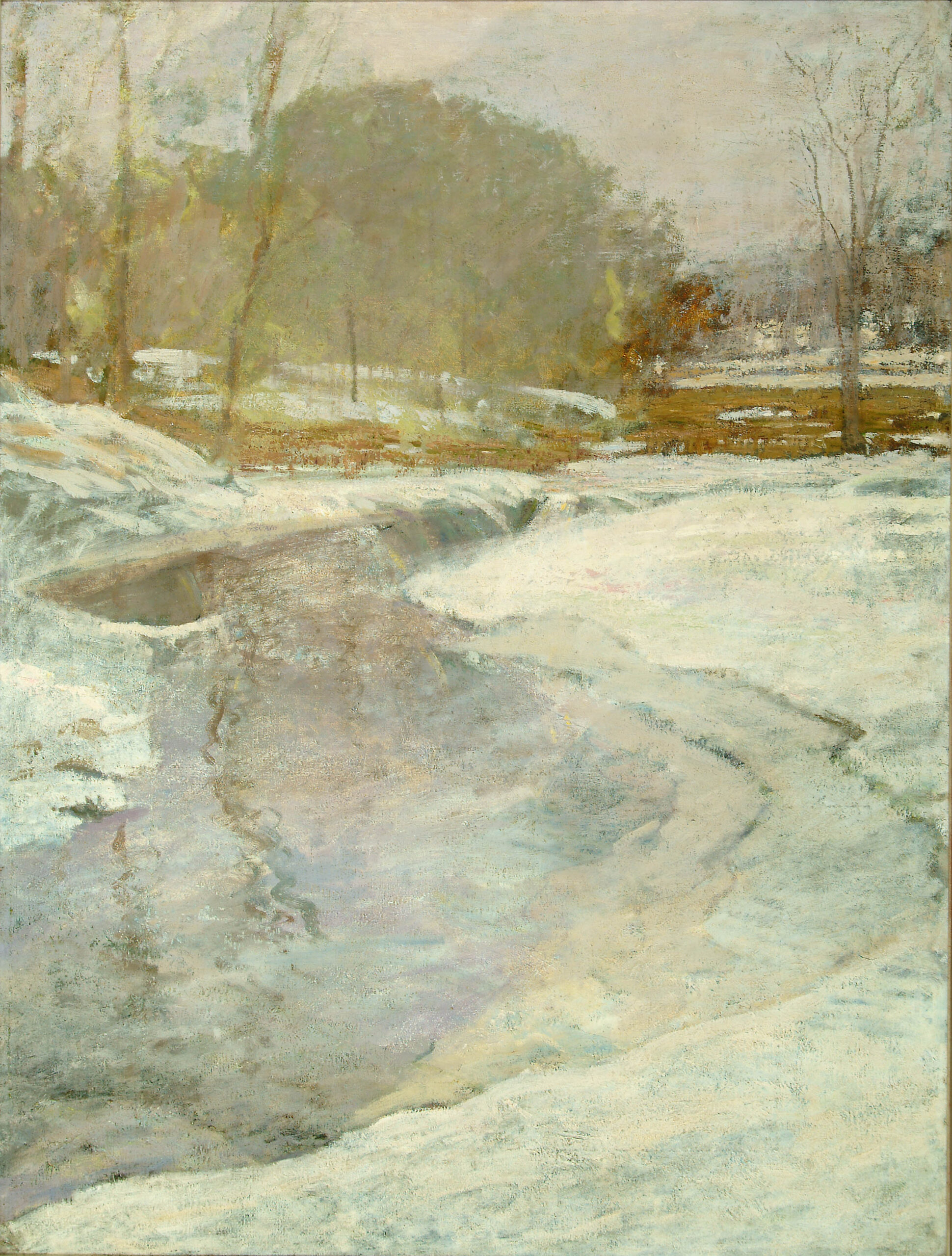In Stream in Winter the long, low arch of a bridge over the Bronx River identifies the scene with Bronxville. One imagines that the artist stood along the water’s edge between what is now Pondfield Road West and Palmer Avenue, where in particular the river twists and turns as in the painting. The artist combines the techniques he learned from his mentors at the National Academy — Barbizon influence from Will Low’s early landscapes and Impressionism from William Merritt Chase. A recognized New York portraitist from about 1895 to 1912, Sheldon Parsons studied at the National Academy under the tutelage of Chase, Edgar Ward, and Bronxville’s Will Low. He moved to Bronxville around 1900 with his photographer wife, the former CarolineReed. When not painting portraits, Sheldon set up his easel outdoors to capture the local landscape. When his wife died prematurely in 1913, the artist and his daughter, Sarah, moved to Santa Fe where he became an important member of that artist colony and, in 1918, first director of the newly established Museum of Fine Arts there. As one might expect, Parsons painting style changed dramatically as he studied the southwestern landscape and light of New Mexico – the subdued palette and atmospheric subjects of his Bronxville years were replaced by brighter colors and more powerful compositions.


